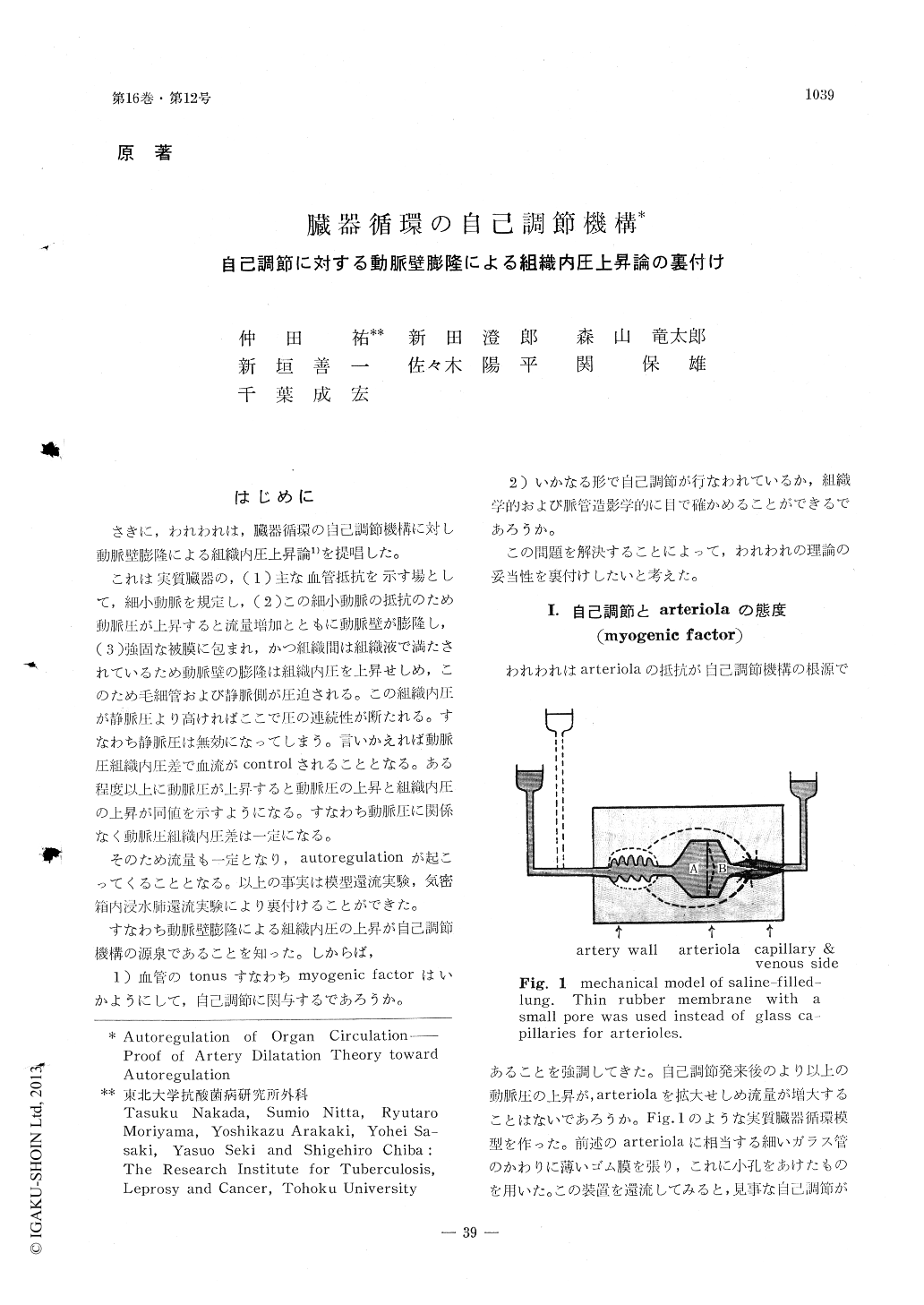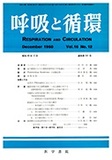Japanese
English
- 有料閲覧
- Abstract 文献概要
- 1ページ目 Look Inside
はじめに
さきに,われわれは,臓器循環の自己調節機構に対し動脈壁膨隆による組織内圧上昇論1)を提唱した。
これは実質臓器の,(1)主な血管抵抗を示す場として,細小動脈を規定し,(2)この細小動脈の抵抗のため動脈圧が上昇すると流量増加とともに動脈壁が膨隆し,(3)強固な被膜に包まれ,かつ組織間は組織液で満たされているため動脈壁の膨隆は組織内圧を上昇せしめ,このため毛細管および静脈側が圧迫される。この組織内圧が静脈圧より高ければここで圧の連続性が断たれる。すなわち静脈圧は無効になってしまう。言いかえれば動脈圧組織内圧差で血流がcontrolされることとなる。ある程度以上に動脈圧が上昇すると動脈圧の上昇と組織内圧の上昇が同値を示すようになる。すなわち動脈圧に関係なく動脈圧組織内圧差は一定になる。
そのため流量も一定となり,autoregulationが起こってくることとなる。以上の事実は模型還流実験,気密箱内浸水肺還流実験により裏付けることができた。
すなわち動脈壁膨隆による組織内圧の上昇が自己調節機構の源泉であることを知った。しからば, 1)血管のtonusすなわちmyogenic factorはいかようにして,自己調節に関与するであろうか。
2)いかなる形で自己調節が行なわれているか,組織学的および脈管造影学的に目で確かめることができるであろうか。
この問題を解決することによって,われわれの理論の妥当性を裏付けしたいと考えた。
In the previous paper, the author proposed the "artery dilatation theory" to explain the mechanism of autoregulation in organ circu-lation. The purpose of the present paper is to report several facts obtained from a series of experiments as below, which seem to be in support of the above theory. (1) Perfu-sion of the enclosed saline-filled-lung reveal-ed that the vascular tonus or the myogenic factor per se does not cause the autoregula-tion, but is a factor determining the level (flow rate) of the autoregulation. (2) Rapid freezing method by using liquid nitrogen confirmed histologically that capillaries, ar-terioles, and even vanuoles become dilated after autoregulation has occured. (3) Angio-graphy showed that the autoregulation taken place when the arteries are dilated and the large veins are deflated with the increased arterial pressure.

Copyright © 1968, Igaku-Shoin Ltd. All rights reserved.


